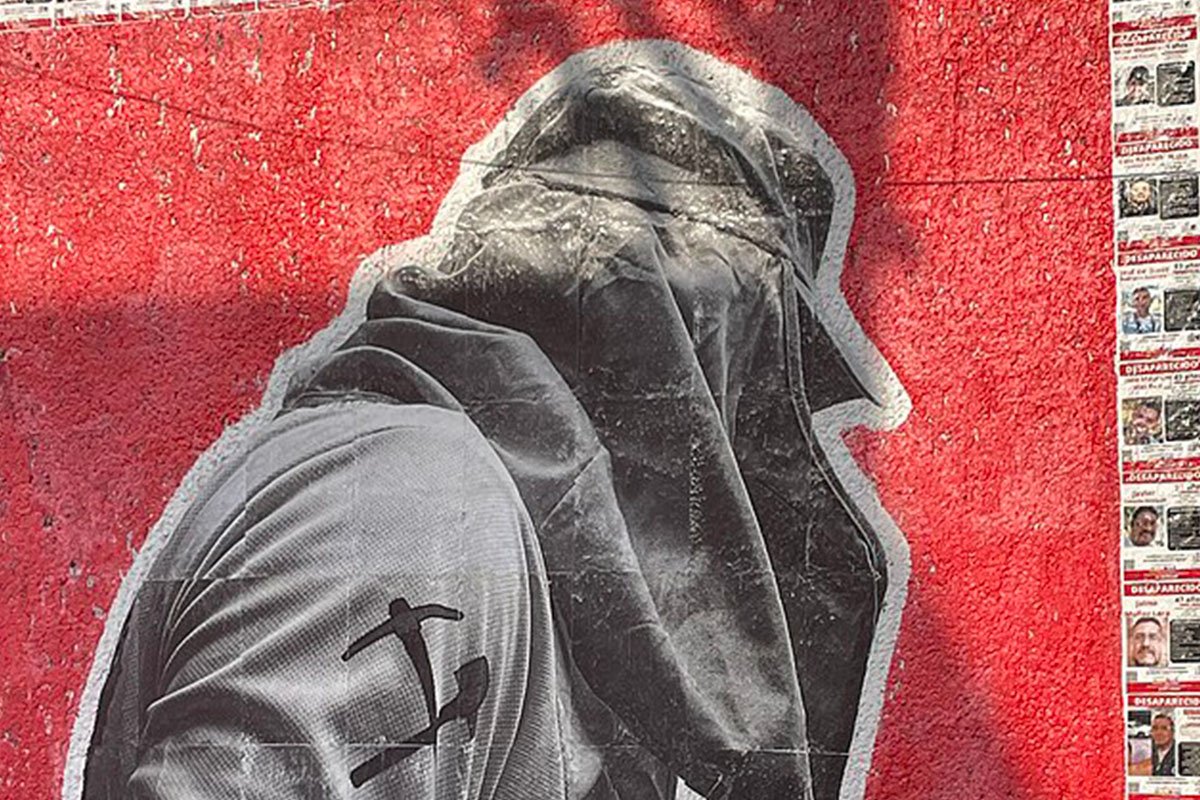
As temperatures crossed 45 degrees Celsius (113 degrees Fahrenheit) in the north Indian state of Uttar Pradesh on June 1, 28-year-old Bhaskar Mishra saw two of his colleagues die.
A bus driver responsible for ferrying election personnel and voting equipment to polling booths during India’s mammoth general elections, Mishra was on election duty when his parched assistant, Lakhan Pahade, asked for water. Due to traffic, Mishra could not find him any. The driver called for an ambulance, and Pahade was put on supplementary oxygen. But Pahade, a married man and the father of five children, passed away in the ambulance.
That same day, Mishra also witnessed the death of 40-year-old Ravi Srivastava, one of the 28 election personnel traveling in his bus. After dropping the passengers at a polling booth in the city of Mirzapur, Mishra was waiting in the bus when Srivastava collapsed on the bus stairs. The driver and a few others tried to lift the man, “but his body had already turned loose.” Srivastava, too, died before reaching the hospital.
Temperature changes can impact election results.
“Both these men seemed to be fine a few minutes before their deaths, and suddenly, all was over,” Mishra said. The driver himself was later hospitalized. “After being exposed to that heat all day, I fell very sick,” he said. “I was so dehydrated that they had to put me on intravenous sugar for three days.”
Pahade and Srivastava were two of the 33 poll workers who succumbed to extreme heat in Uttar Pradesh that day. But the total toll of India’s intense heat this summer is much higher. Experiencing one of its longest and deadliest summers ever, India saw temperatures cross 50C in some parts of the country this year—and the record-breaking heatwave killed over 200 while leaving tens of thousands ill.
Heat as a Trigger
Climate change has made heatwaves 30 times more likely in India. As the South Asian nation hosted the world’s largest exercise in democracy over six weeks between April and early June this year, heatwaves blanketed the country for days, with daytime and night-time temperatures hitting dangerous levels. Politicians, campaigners, and voters alike were affected by heat syncope (fainting or dizziness due to overheating), and medical facilities reported numerous cases of heat stroke.
Analysts also peg the low voter turnout this season on extreme heat.
Anjal Prakash, research director of the nonprofit think tank Bharti Institute of Public Policy, based in the north Indian state of Punjab, said that extreme heat in India has significantly impacted its elections, affecting voter turnout and poll officers’ efficiency.
India’s 2024 elections may also be a preview of what lies ahead for other nations, as extreme heat, exacerbated by climate change, is likely to increasingly affect future elections worldwide, causing health issues and dictating poll outcomes, said Prakash.
“Rising temperatures can lead to health hazards for both voters and election workers, potentially reducing voter turnout and affecting the overall democratic process. Marginalized communities may face heightened vulnerability to heat-related illnesses, exacerbating existing disparities in political participation,” said Prakash, adding, “Moreover, extreme heat can trigger social unrest and migration due to climate-induced pressures, influencing electoral dynamics and outcomes.”
How Heat May Impact Upcoming Elections
As record-breaking heat events continue to increase worldwide, we must “hope that other countries take this into account when planning their next elections.”
Analyzing state-level data from the US presidential elections, a study led by Jasper Van Assche, a researcher at Belgium’s Ghent University, established that temperature changes can impact election results. The study revealed two possibilities. First, significant increases in temperature on voting days may increase anger, motivating some citizens to vote for “non-system” or non-incumbent parties. On the other hand, slightly higher temperatures may make people feel more comfortable, translating into a happy mood and resulting in more votes for the incumbent party.
“The latter process is the strongest motivator, so one could argue that the Democrats [in the upcoming US presidential elections] could be helped a little bit if the temperature on election day is higher compared to four years earlier,” Van Assche said in an email interview.
The researcher, however, added that in the future, rising temperatures may not translate into happy moods, as the extreme heat is likely to make people uncomfortable and worse, fueling anger and frustration. This, he said, “may result in lower electoral success for the incumbent party, although it should always be emphasized that other factors also play a role.”
Sign up for our free newsletters
Subscribe to NPQ's newsletters to have our top stories delivered directly to your inbox.
By signing up, you agree to our privacy policy and terms of use, and to receive messages from NPQ and our partners.
Commenting on the upcoming US elections, Shana Kushner Gadarian, the associate dean for research at Syracuse University’s Maxwell School of Citizenship and Public Affairs, noted that while rising temperatures may not shape vote choice directly in the United States this year, they will likely increase the salience of climate as an issue.
“This will especially be the case for candidates on the left, where voters name the environment and climate as issues they care about, and where President Joe Biden has a record of policy achievements on climate, including the Inflation Reduction Act,” Gadarian said.
In the future, extreme heat could also affect voter turnout, Gadarian added. “We know that any barriers to voting—long lines, bad weather, voter registration rules, voter identification rules—can drive down turnout, particularly for those who are not habitual voters, young people, people who work hourly jobs, the disabled. So, heat could be another one of those barriers that keep people [away] who are more vulnerable.”
Rising temperatures can also dictate political preferences, encouraging support for left-leaning parties, revealed a 2024 study that examined the impact of temperature variations on political behavior. The study, conducted by researchers at the London School of Economics and Political Science, stated that a 1C (1.8F) rise in regional temperature boosts the likelihood of voting for left-leaning parties by 3.4 percent.
“Exposure to higher temperatures correlates with political moderation, reduced backing for extreme and populist parties, heightened climate concerns, and increased support for environmentally conscious agendas,” noted the study.
In India, meanwhile, the heat has already influenced election results. Prime Minister Narendra Modi was sworn in for a rare third term this June. However, unlike in 2019 and 2014, when Modi’s right-wing Bharatiya Janata Party (BJP) claimed a full majority, this season the BJP fell from 303 seats in 2019 to 240 in 2024.
Reading India’s election results against its especially harsh summer this year, Van Assche said, “While BJP remained the most popular party, they lost quite a number of seats (63). Based on the hypothesis I mentioned, one could argue that at least one of these lost seats could be due to the extremely hot temperature in India during the days of the elections.”
We could witness a 370 percent increase in heat-related deaths by midcentury.
What Governments Must Do to Mitigate the Heat Impact
As India’s nearly 970 million voters, election officials, and candidates from a massive group of 2,600 political parties grappled with a scorching summer, the Election Commission of India formed a task force to monitor heatwave conditions. It ordered polling stations to have facilities like drinking water and washrooms, and issued guidelines on how voters can protect themselves from extreme heat. However, deaths continued to be reported, including those of polling officers.
Van Assche said that the deaths of election personnel in India are “a tragic consequence of extreme temperatures” and that as record-breaking heat events continue to increase worldwide, we must “hope that other countries take this into account when planning their next elections.”
According to the World Health Organization (WHO), heat stress is the leading cause of weather-related deaths. Between 2000 and 2019, the world reported approximately 489,000 heat-related deaths each year. The number of people exposed to extreme heat is “growing exponentially” due to climate change in all world regions, the WHO states—and as our planet warms, we could witness a 370 percent increase in heat-related deaths by midcentury.
Considering the impact of extreme heat on human lives and the democratic process, governments must take measures to protect their populations during polling seasons, according to experts. Prakash of the Bharti Institute of Public Policy argued that election authorities must “adapt by implementing climate-resilient strategies, such as providing cool shelters at polling stations, utilizing electronic voting systems resistant to temperature fluctuations, and raising awareness about climate change’s implications for democratic processes.”
Gadarian, meanwhile, suggested that “election [administrators] might want to consider shifting hour[s] to vote and increasing the opportunities for people to vote across many days rather than have to wait in lines to vote particularly in the heat of the day.”
For some voters and polling personnel in India, such measures are already too late. Dr. C.L. Verma, the chief medical officer of Mirzapur, said that the day Srivastava, the polling officer, died, about 11 others did too, succumbing to extreme heat in the city.
“The temperature had crossed 46C (114F). The election personnel had been on duty for several days, traveling in buses in that intolerable heat. There were arrangements for coolers, but when the temperature is so high, all systems in the body start failing. Nothing helps,” said Verma. “Everyone is talking about global warming; temperatures are rising every year. Then why do we need to hold elections during the hotter months?”











